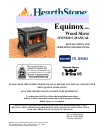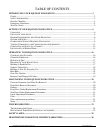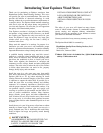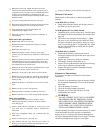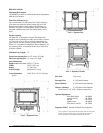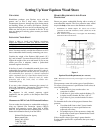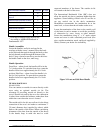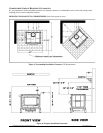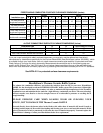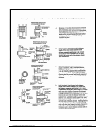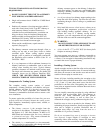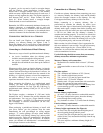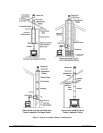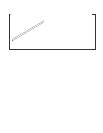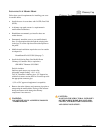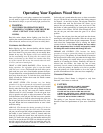
HearthStone Quality Home Heating Products, Inc ® Equinox Model 8000
4
Burn natural wood only. Higher efficiencies and lower
emissions result when burning air-dried, seasoned wood, as
compared to green or freshly cut wood. Manufactured wood
products may contain adhesives, bonding agents, and
coatings that can produce dangerous burning conditions and
hazardous fumes.
Use caution when loading firewood into a hot stove.
Keep the front and side doors closed and secured at all times
except when loading wood or using the spark screen.
Keep the ash pan tray fully inserted and the ash
compartment door tightly closed.
Inspect the stovepipe, chimney connector and chimney, as
recommended.
Follow these safety precautions:
Never modify this stove in any way.
Never burn kiln dried, manufactured, painted, or treated
wood in this stove.
Never burn coal in this stove.
Never burn garbage or trash, colored or glossy paper,
solvents, plywood, artificial logs, cardboard, or driftwood, in
this stove.
Never use gasoline, kerosene, charcoal lighter fluid, or other
flammable fluids to start or invigorate the fire. These fuels
will cause dangerous burning conditions in the stove. Keep
all such materials away from the stove.
Never use the stove if the ash pan compartment door is open,
damaged, not present, or does not fully seal.
Never use a wood grate or other device to elevate the fire.
Never allow logs in the firebox to contact the glass when the
door is closed. Logs touching the glass as they settle during
burning is okay.
Never slam the door or use the door to force wood in to the
stove.
Never over-fire your stove. (See page 18)
Never put articles of clothing or candles on a hot stove.
Never connect the stove to a flue used by another appliance.
Other safety guidelines
Keep all combustible items such as furniture, drapes,
clothing, and other items, at least 36" (0.92 m) from the
stove (See page 8)
Install a smoke detector, preferably in an area away from
your wood stove in accordance with its manufacturer’s
instructions.
Keep a fire extinguisher handy. We recommend the type
rated "A B C."
Dispose of ashes properly. (See page 18)
Keep children and pets away from the stove when it is
burning; serious injury can result from touching a hot stove.
Clean your chimney system as needed. (See page 20)
PERIODIC CHECKLIST
Perform each of these tasks at, or before the specified
intervals.
At the End of Every Week:
• Empty ashes from the firebox and ash pan, sooner if
the firebox or the ash pan is full.
At the Beginning of Every Other Month:
• Depending upon your use of the stove, visually inspect
the chimney connector and chimney for creosote. (See
page 20)
• Check door seals using the "dollar bill test." - When
the stove is cool, shut the door on a dollar bill. If the
bill pulls out without any resistance, then your stove’s
door is not sealing properly. To tighten the seal, adjust
the door latch mechanism or change the door gasket.
(Refer to page 20.)
At the End of Every Season:
• Dismantle the chimney connector and clean it
thoroughly. Replace any pieces that show signs of rust
or deterioration.
• Inspect and, if necessary, clean your chimney.
• Thoroughly clean the inside of the stove.
• Inspect all door gasket material and replace if missing,
worn, frayed, cracked or extremely hard.
• Inspect and replace cracked or damaged refractory
soapstone in the firebox.
EMERGENCY PROCEDURES
If you have a stovepipe or chimney fire, follow these
instructions:
1. If the fire is too threatening, leave the area and call the
fire department immediately! If not, perform the next
three steps.
2. Close the primary air control.
3. Close the stovepipe damper (if present).
4. Keep the stove’s front and side doors, and ash
compartment door closed!
WARNING
DO NOT ATTEMPT TO PUT OUT A STOVEPIPE
OR CHIMNEY FIRE BY THROWING WATER
ONTO THE STOVE, STOVEPIPE, OR CHIMNEY.
THE EXTREMELY HIGH TEMPERATURE OF
SUCH FIRES CAN CAUSE INSTANTANEOUS
STEAM AND SERIOUS BODILY HARM.
Once the chimney fire expires, leave the primary air control
closed and let the fire in the stove die out completely.
Inspect the stove, stovepipe, and chimney thoroughly for
any sign of damage before firing the stove again. You must
correct any damage before using your stove again.



